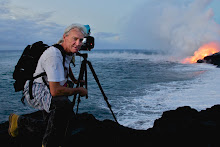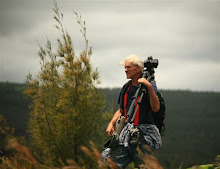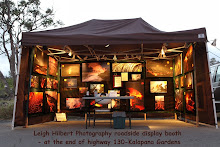


The USGS/HVO has posted some excellent thermal images overlaid with aerial photos, which, when combined, offer a true picture of just how massive and extended this flow has become. I have posted the images above but you can see their originals with informative & descriptive captions here
As far as I know, little has changed with the coastal lava flow, parking situation or viewing opportunities at the end of highway 130; though I have not been myself for a couple of days. I do have reports from those that have been there and nothing pronounced has occurred since my last blog post below.
I have been working on a feature length movie of the April through May 2010 coastal lava flow and am now doing the final editing. This has left me limited time to gather firsthand field reports. I will post a trailer to the movie soon.
Below is my most recent updates, which I believe are still valid today:
---------------------------------------------------------------------------------------------
May 24, 2010: More Deflation/Inflation under the volcano ~ Coastal lava flow map ~ New surface flow
An updated field flow map below, painstakingly surveyed and charted by the USGS, can also be opened on their map update site, which also has many other charts and interesting information.
Deflation/Inflation (D/I) pressure swings beneath Kilauea Volcano are being registered by USGS/HVO tilt monitors; these are some of the wildest short-term variances the magma chambers have gone through in some time. Makes me wonder if Pele has some new plans in the works for the eruption.
The past two days I have been working on my new video of the April-May lava flow and not out on the lava flow. Reports from those who have been are saying there is a new surface flow breaking out high above the coastal pali, and also a possible new surface flow west of the present entry points.
As of Sunday, May 23rd, visitors to the end-of-the-road viewing area were still required to park and walk a mile there & back. Perhaps the State or Hawaii County will re-locate parking back to the new lava-covered terminus of highway 130 this week… would be nice. Visitor numbers have steadily dropped this past week from 1300 to closer to four-hundred on Saturday.
----------------------------------------------------------------------------------
Active lava viewing prospects:
1) The Halema’uma’u crater has been degassing sulfur dioxide fumes by day and glowing strongly at times after dark from lava deep within the craters pit vent. Great views are from the Jaggar Museum within the Hawaii Volcanoes National Park, depending on the weather & wind, and the park is open to the public 24 hours a day.
2) Coastal viewing:
Highway 130 at Kalapana Gardens area -- Between the hours of 2:00 PM and 8:00 PM - park and walk one mile to the end of newly lava covered (May 5th) road; viewing is allowed until about 9:00 PM. Along the walk out and back the steam plumes from the distant ocean entries lava can be seen and after dark it glows orange-red; long lines of degassing lava fumes coming down the hillsides by day –distant red lava orbs lined-up by night; at roads end the still somewhat warm lava on the road can be felt and is still radiating hotter close by but beyond public access. Occasional yellow flare-ups are still, though less often, witnessed in the distance as lava torches trees and vegetation further into the active flow field. Far above the pali, after dark and when low clouds are present, the orange-red glow of a new surface flow can be seen reflected on the clouds. Offered at the parking area only: security personnel, vendors, who sometimes have water for a dollar, and port-o-potties available; at roads end there are barricades, port-o-potties and security personnel.
~~~~~~~~~~~~~~~~~~~~~~~~~~~~~~~~~~~~~~~~~~~~~~~~~~~~~~~~~~~~~~~~
Further information, links and warnings:
The coastal entry points are still emptying a lot of lava into the sea as new deltas area being rapidly built. The entire half-mile length of the ocean entry and all land adjacent to it inland is quickly becoming unstable and should be kept well aware of from now on:
HAZARD ALERT: The lava delta and adjacent areas both inland and out to sea are some of the most hazardous areas on the flow field. Frequent delta/bench collapses give little warning, can produce hot rock falls out to 400 m (quarter mile) inland and in the adjacent ocean, and can produce large local waves and scalding water. The steam plume produced by lava entering the ocean contains fine lava fragments and an assortment of acid droplets that can be harmful to your health. The rapidly changing conditions near the ocean entry have been responsible for many injuries and a few deaths.
Below is the timeline links to my posts for this April-May flow:
You can watch the May 5th feature Hawaii-News-Now story of the lava coming onto the end of highway 130 by clicking this link here
Click on this link for a complete blog summary of this entire April, 2010 surface flow of lava; from mountain to sea: (scroll to the bottom and read each post running up for a chronological timeline)
And my most recent days postings for May, 2010
I will keep this as my main posting update layout in the coming days, adding new headings and images as lava events warrant.










No comments:
Post a Comment